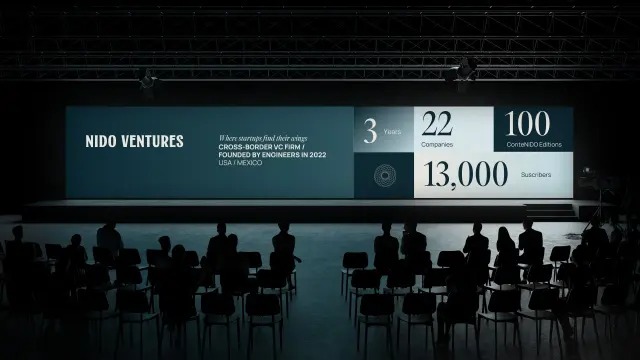Phishing attacks have become more deceptive with the help of AI. In 2025, even security-aware users are getting tricked by hyper-personalized lures.
AI-Powered Phishing Attacks Escalate in 2025
Phishing, already the most prevalent cyberattack method, has reached alarming new levels of sophistication in 2025—thanks to artificial intelligence. With the rise of generative AI and advanced language models, attackers are creating highly personalized, credible, and context-aware phishing messages that can fool even seasoned professionals.
AI: The Phisher’s New Weapon
Generative AI tools like ChatGPT, LLaMA, and open-source large language models are now being
weaponized by cybercriminals. These tools can:
-
Generate flawless, human-like emails in seconds
-
Impersonate specific writing styles
-
Mimic corporate tone, formatting, and logos
-
Translate and localize messages for global victims
-
Create voice-based “vishing” calls using cloned speech
Unlike the clumsy, error-laden phishing emails of the past, today’s AI-powered attacks can be
indistinguishable from genuine communications.
How AI Supercharges Phishing
Hyper-Personalization: AI scrapes social media, LinkedIn, and data leaks to craft tailored emails that mention recent meetings, job roles, or interests.
Impersonation: Attackers use AI to clone executive writing styles and even generate fake video or voice messages (deepfakes).
Volume & Speed: AI generates thousands of messages with unique content—making traditional spam filters ineffective.
Multilingual Capabilities: Global attacks are now seamless, with AI crafting convincing phishing in any language.
These capabilities have resulted in a
400% increase in successful phishing attacks in the first quarter of 2025, according to the Cyber Threat Intelligence Alliance (CTIA).
Real-World Incidents
-
FinBank CFO Impersonation: Attackers used a deepfake video to trick finance teams into wiring $2.4 million.
-
Healthcare Portal Hack: AI-generated emails impersonating IT support led to credential theft and a massive HIPAA breach.
-
University Payroll Scam: Students and faculty were lured into updating “direct deposit” info, redirecting thousands of payments.
Each of these cases shared a common theme:
believability powered by AI.
Business Email Compromise (BEC) + AI
AI has transformed
Business Email Compromise (BEC) into an even more insidious threat. Attackers use AI to:
-
Analyze past email threads
-
Inject replies mid-conversation
-
Suggest invoice changes or wire transfers
-
Schedule fake calendar invites with malicious links
The FBI estimates losses from AI-enhanced BEC could surpass
$15 billion globally in 2025.
AI in Voice & Video Phishing
-
Voice Cloning: With just a few seconds of audio, attackers clone a CEO’s voice to call an employee with urgent financial requests.
-
Video Deepfakes: AI tools generate fake Zoom calls or video messages from executives or vendors.
These tactics are being used to
bypass 2FA by tricking employees into revealing OTPs during fake calls or chats.
Who’s Most at Risk?
-
C-Level Executives: High-profile, easily imitated
-
Finance Teams: Targets for wire fraud
-
IT Support: Often impersonated
-
Remote Workers: Vulnerable due to less face-to-face verification
-
Students/Educators: Attacked via university portals
Why Traditional Defenses Fail
-
Static Filters: AI-generated emails vary enough to bypass keyword-based filters
-
Security Training Gaps: Most phishing simulations don’t mimic real AI threats
-
Visual Similarity: AI replicates branding perfectly, tricking even alert users
Defending Against AI-Driven Phishing
1. Behavioral AI for Detection
Use AI to fight AI—deploy machine learning tools that detect anomalies in communication patterns, language, and metadata.
2. Email Verification Layers
Implement DMARC, SPF, and DKIM to authenticate sender identities.
3. Real-Time Training
Move beyond annual phishing tests. Deploy simulations that mimic AI-generated threats regularly.
4. Human Verification
Encourage out-of-band verification (e.g., call before wiring funds).
5. Voice/Video Verification
Treat unexpected calls or videos—even familiar voices—with caution.
6. Zero Trust Policies
Limit lateral movement and access even after a credential is phished.
The Role of Regulation
Governments and enterprises are pushing for:
-
AI watermarking standards
-
Mandatory disclosure of deepfake-related frauds
-
Penalties for misuse of generative AI tools
The EU’s
AI Act, and the U.S.
Executive Order on AI Safety, are expected to include anti-phishing provisions in their next updates.
Conclusion
AI-powered phishing attacks mark a new era in cyber deception. As generative models grow more capable, organizations must
rethink traditional security paradigms. Defenses need to be proactive, adaptive, and AI-enabled themselves. Awareness, technology, and policy must evolve in lockstep to counter this escalating threat.





























